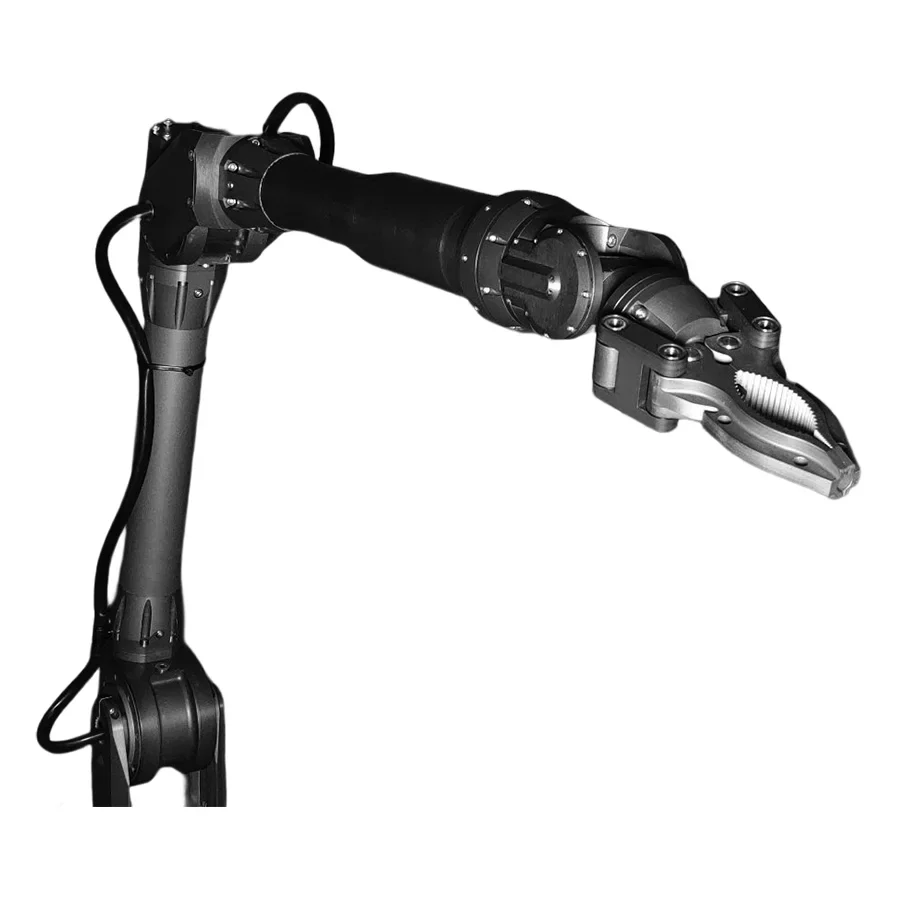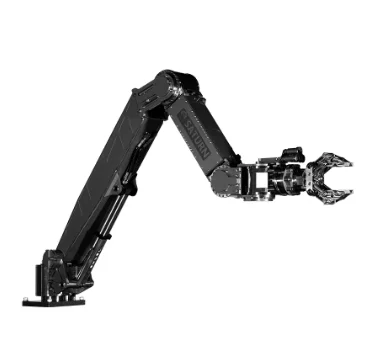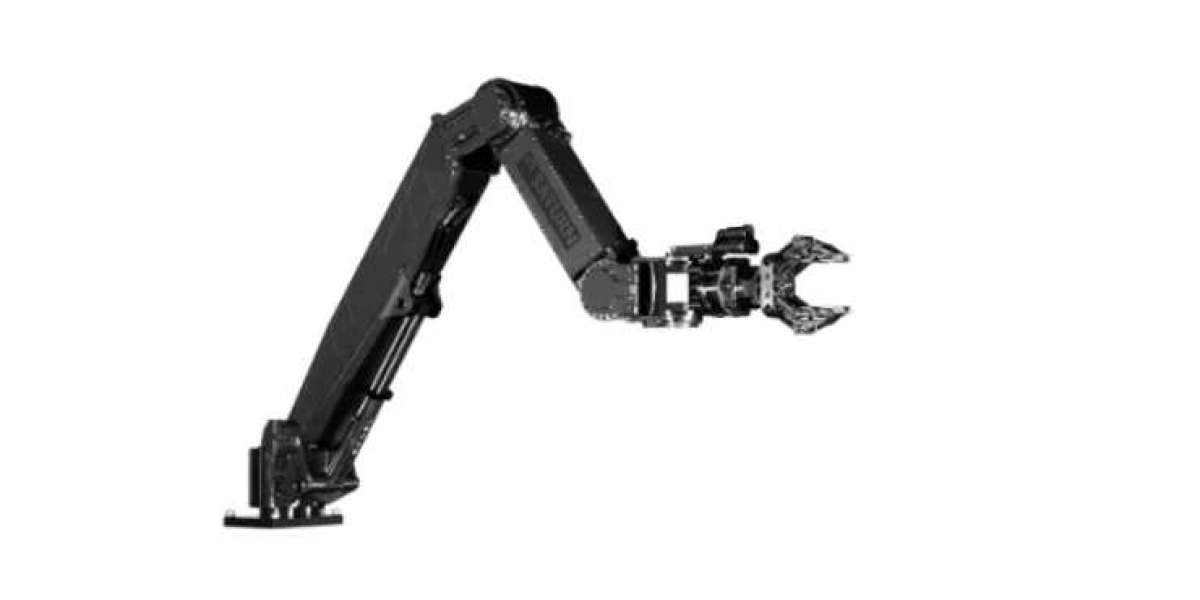Electric manipulators are rapidly gaining popularity as a sustainable solution for industrial automation. With the increasing demand for efficient and eco-friendly manufacturing processes, electric manipulators offer a promising alternative to traditional hydraulic and pneumatic systems. These advanced machines are designed to perform a wide range of tasks, from material handling and assembly to packaging and palletizing, with precision and speed. In this article, we will explore the benefits of electric manipulators and their potential to revolutionize the industrial automation industry.
Benefits of using electric manipulators for industrial automation
Electric manipulators are revolutionizing the world of industrial automation, offering a wide range of advantages that make them an attractive option for businesses. These advanced machines use electricity to perform tasks accurately and efficiently, resulting in increased productivity and cost savings.
One of the main advantages of electric manipulators is their versatility. They can be easily programmed to perform a variety of tasks, such as lifting heavy objects, assembling parts, or sorting materials. This flexibility enables businesses to quickly adjust their operations in response to changing market demands.
Another major benefit is improved security. Electric manipulators are equipped with advanced sensors and control systems to ensure precise movements while minimizing the risk of accidents or injuries. With these machines handling repetitive or hazardous tasks, workers can be reassigned to more skilled or strategic roles.
Additionally, electric manipulators are more energy efficient than traditional hydraulic or pneumatic systems. By using electricity as a power source, they consume less energy and produce fewer emissions during operation. Not only does this reduce the impact on the environment, it also reduces the business’s operating costs in the long run.
Additionally, electric manipulators provide excellent accuracy and repeatability. Its advanced control system enables positioning and motion control with millimeter-level accuracy. This level of precision ensures consistent quality during the manufacturing process while reducing waste due to errors.
Compared to other types of automation equipment, electric manipulators have relatively low maintenance requirements. With fewer moving parts and a simplified structural design, these machines experience less wear and tear over time, reducing maintenance costs and downtime for businesses.
In summary, leveraging electric robot technology brings numerous benefits to industrial automation applications, from increased versatility and enhanced safety features to improved energy efficiency, all the way to improved levels of precision and reduced maintenance requirements.

Different types of electric manipulators
When it comes to industrial automation, electric manipulators play a vital role in improving efficiency and productivity. There are many types of these versatile machines, each designed to meet specific needs and industries.
One type of electric manipulator is a gantry robot. This type of manipulator consists of a horizontal beam supported by two or more vertical columns, allowing precise linear motion along multiple axes. Gantry robots are typically used in applications that require heavy lifting or long distances.
Another popular type is the articulated robot. These robots have multiple joints similar to human arms, giving them superior flexibility and dexterity. Articulated robots are widely used in assembly lines, welding operations and material handling tasks.
Parallel robots are another category of electric manipulators. They have multiple arms connected to a common base plate using parallel links. This design enables them to handle high-speed movements with high precision, making them ideal for pick-and-place operations and packaging tasks.
Delta robots provide excellent solutions for applications requiring high-speed performance and precise handling. With a unique configuration consisting of three arms connected to a fixed base at one end and interconnected by a gimbal at the other end, the Delta robot excels at tasks such as sorting products on conveyor belts or assembling small electronic components.
Each type of electric manipulator has its own advantages and capabilities. By understanding these different types, businesses can choose the most appropriate option based on their specific requirements and industry needs.

Applications of electric manipulators
Electric manipulators are widely used in various industries and are an essential tool for industrial automation. These versatile machines are designed to perform repetitive tasks with precision and efficiency. Let’s explore some key areas of using electric manipulators.
1. Manufacturing: In the manufacturing industry, electric manipulators play a vital role on the assembly line. They can handle heavy loads, perform complex tasks such as welding or brazing, and ensure uniformity and consistency in the production process.
2. Packaging and logistics: Electric robots are ideal for packaging products efficiently and safely. They can pick items from a location, place them into a container or box, and then neatly stack them on a pallet for shipping.
3. Automotive Industry: Electric manipulators are widely used in the automotive industry to perform various tasks such as body painting, installing components on assembly lines, lifting heavy parts during the manufacturing process, etc.
4. Pharmaceuticals and Healthcare: In pharmaceutical companies or hospitals, electric robots help accurately sort drug packages and handle delicate medical instruments during surgeries or laboratory operations without causing contamination or damage.
5. Food Processing: Electric robots provide hygienic solutions for food processing operations by automating tasks such as picking fruits from trees or conveyor belts and sorting vegetables according to size or quality criteria while minimizing human contact to maintain cleanliness
Conclusion
In today's rapidly evolving industrial landscape, the need for efficient, sustainable automation solutions has never been greater. Electric manipulators have become a game-changing technology with numerous advantages that make them the first choice for industrial automation.
From increasing productivity to improving safety and reducing environmental impact, electric robots are revolutionizing the way industries perform tasks. With their advanced features and precise control, these machines offer unparalleled flexibility and adaptability.
Whether lifting heavy objects, assembling precision components, or performing complex tasks with the highest precision, electric manipulators deliver consistent results while minimizing human error. Its ergonomic design ensures optimal operator comfort, increases overall efficiency and reduces the risk of injury.
Additionally, electric manipulators are available in different types to meet specific industry requirements. Whether you need a collaborative robot that can work alongside humans or a high-speed robotic arm that can handle demanding applications, there's an electric manipulator for every task.
Applications of electric manipulators span a variety of industries, such as automotive manufacturing, electronics assembly, pharmaceutical production, food processing, and more. These versatile machines integrate seamlessly into existing workflows to streamline operations and maximize production.
Electric manipulators are not only an effective solution for industrial automation, but they can also achieve sustainability goals by reducing energy consumption and waste generation.








